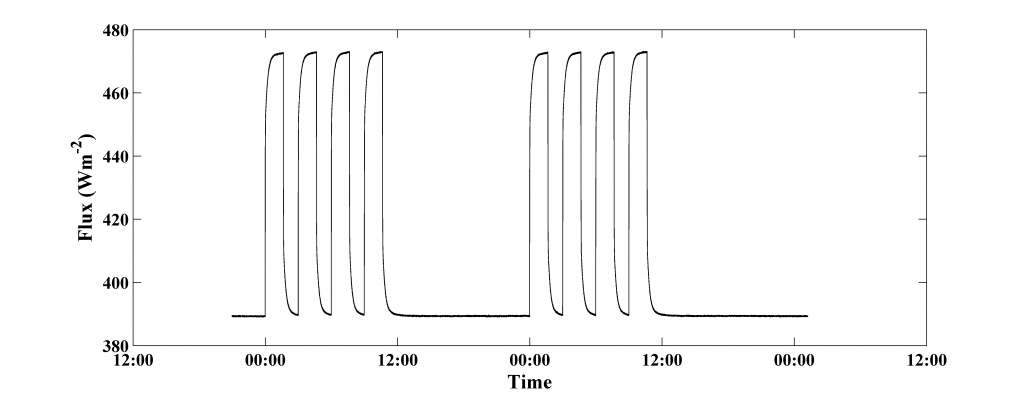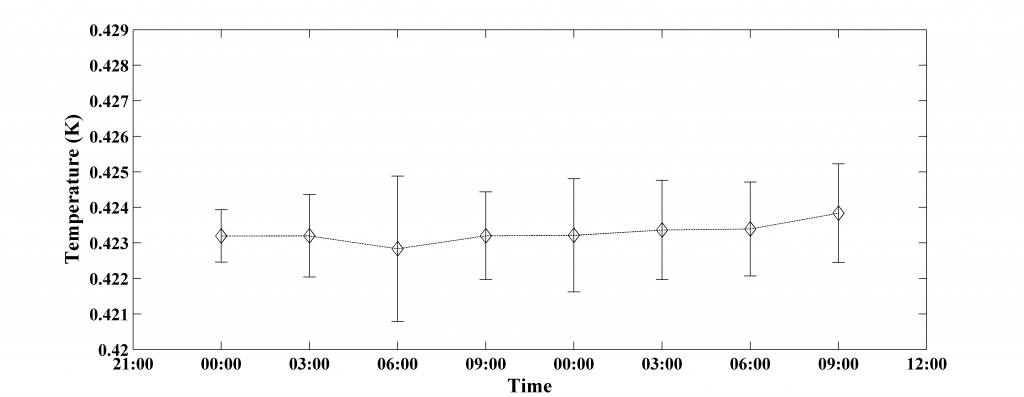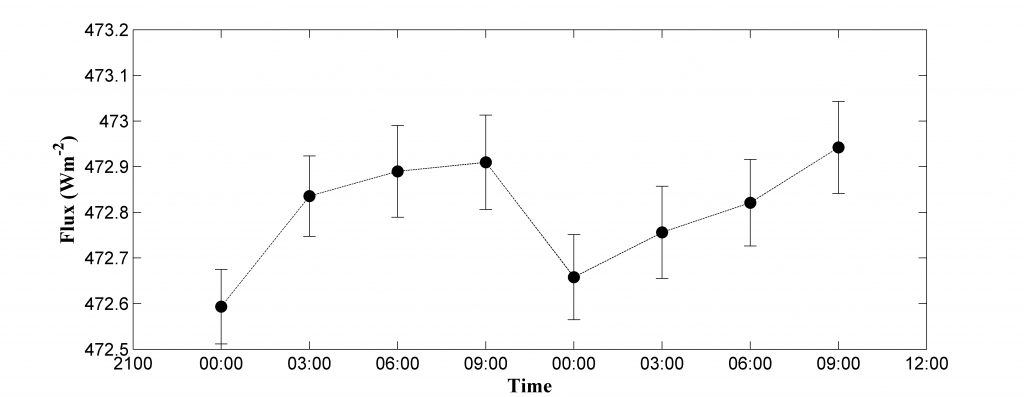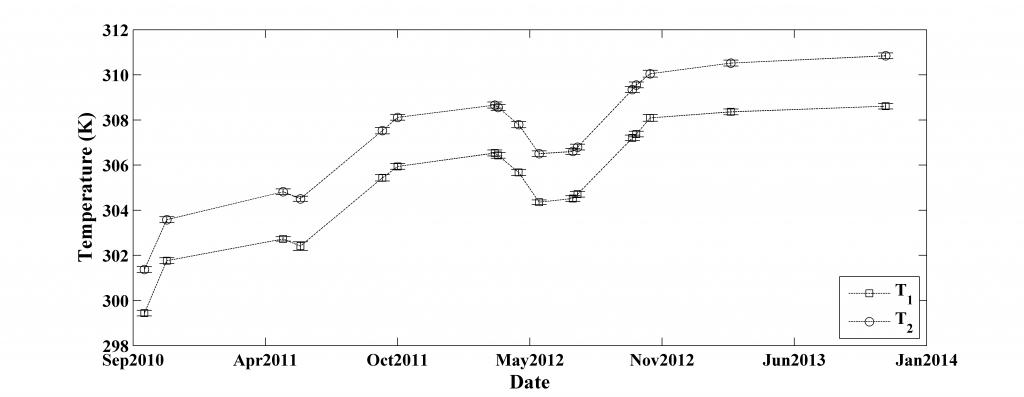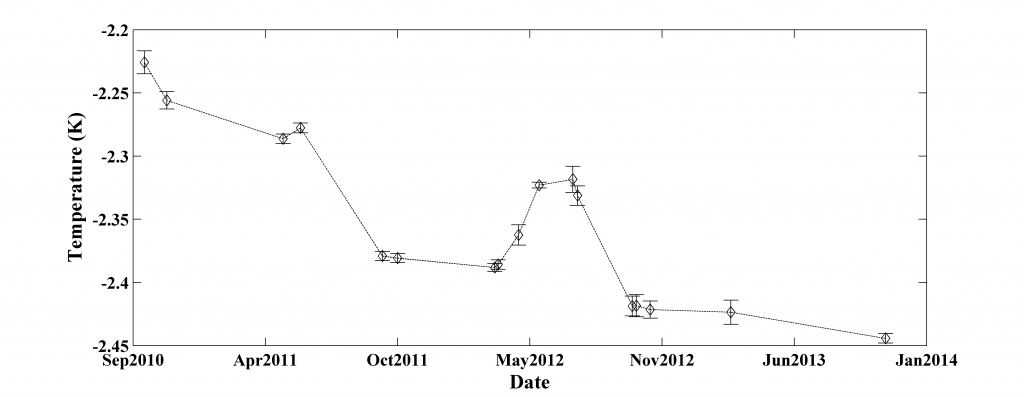Laboratory thermal vacuum test
We manufactured two identical instrument following the same process. The laboratory experiment is conducted with the ground spared one. The complete instrument unit was setting up inside a small vacuum tank. The supporting part of BOS is directly attached to the inner wall of the vacuum tank. Indeed, the measurements is sensitive to the temperature of environment due to the thermal conductivity between the supporting mass of BOS and the vacuum tank. Therefore, it is important to do the experiment under a temperature controlled room.
The experiment is finally realized at an astronomy photo disk digitizing Laboratory. A climatisation installation delivered by Becker Reinraumtechnik® regulates the clean room to a constant air temperature of 20°C ± 0.05°C and a relative air humidity of 50 % ± 1%. (Digital Acces to Aerial and Astrophotografic Archives , D4A, Dr. De Cuyper-ORB). A Labsphere Uniform Source Integrating Spheres is selected as a radiation source (DeMeLab,ORB). The inner sphere of Labshpere is coated with Labsphere’s highly reflective and durable Spectraflect® coating, it is producing a very homogenous UV-VIS-NIR radiation (Labsphere PB-13019-000). The source generated by Labshpere was passing through a one centimeter aperture and arrived at the front transparent optical window of the vacuum tank. It is automatically ON/OFF for eight cycles. The period of each cycle is 99 minutes, which is close to the orbital period of PICARD satellite .
The T1 and T2 temperature was measured around the peak value when the Labshpere was on. The mean value and the standard deviation (1σ) of T1 is 294.897±0.007K, T2 is 294.480±0.004K and the difference temperature (T1-T2) is 0.423±0.001 from eight ON/OFF experiments (Figure 2b,c). The flux is calculated from the value of T1 and T2. The mean and standard deviation is 472.8±0.1Wm-2. The 1σ value of temperature is at the level of miliKelvin, the number of flux is about tenth of Wm-2 . The total trends show a clear diurnal cycle variation in temperature and more evident in flux .
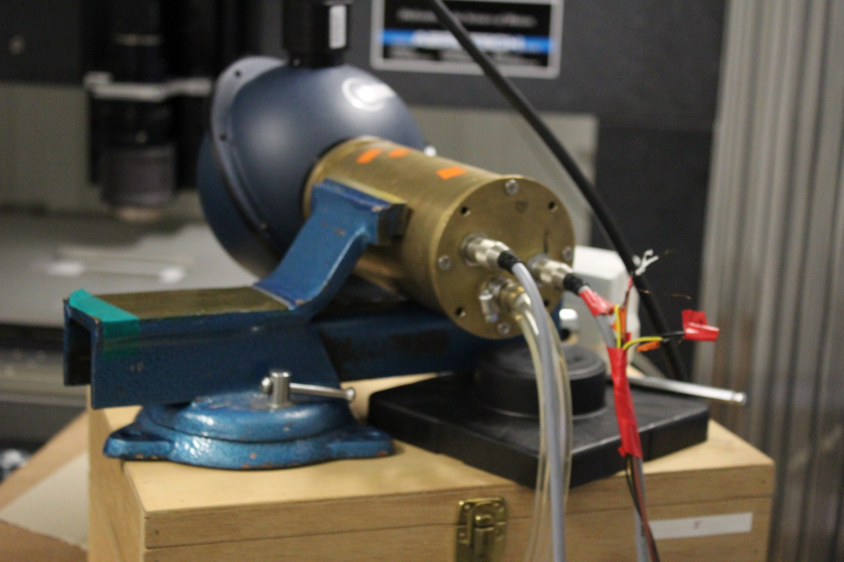
The BOS was installed inside a small vacuum chamber. A labsphere was selected as a UV-VIS-NIR radiation source. The complete facilities were installed inside a thermal controlled clean room.
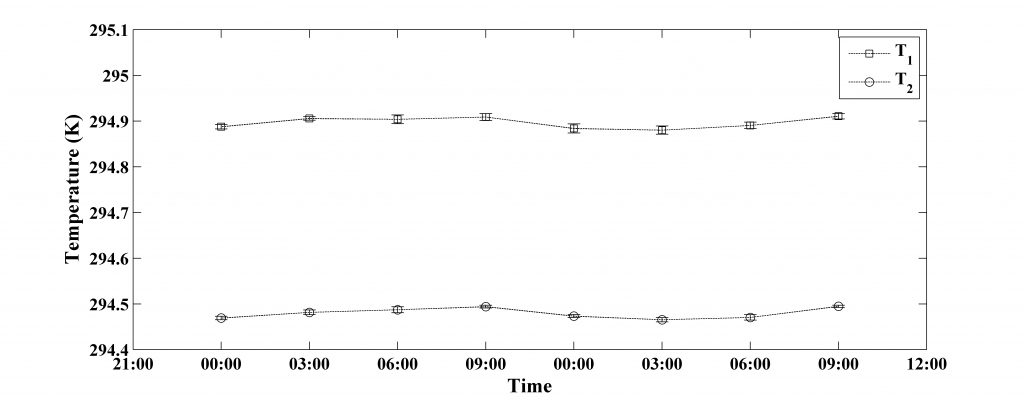
![]() and
and ![]() was measured around the peak values when radiation source was on. Error bar is the standard deviation of each measurement.
was measured around the peak values when radiation source was on. Error bar is the standard deviation of each measurement.
Space Observations (MES)
In the entire PICARD life time, there are 22 MES operations, five of them was happened inside the occultation period of 2013, which has an abnormal positive minimum. The reason is still under investigating. All rest MES were kept, the flux is calculated for each MES. Contrary to the laboratory experiment, the temperature is measured around the minimum value during MES. From 17 MES events, the mean value and the standard deviation of T1 is 305.3± 0.13, T2 is 307.4 ±0.13 and (T1-T2), -2.356± 0.006 , the value of calibrated flux F, 1369.7± 1.68. The uncertainties of T1 and T2 is two orders and the Flux F is one order higher than the laboratory experiment. Only the difference temperature T1-T2 shows a same level error budget than the results of laboratory experiment .
